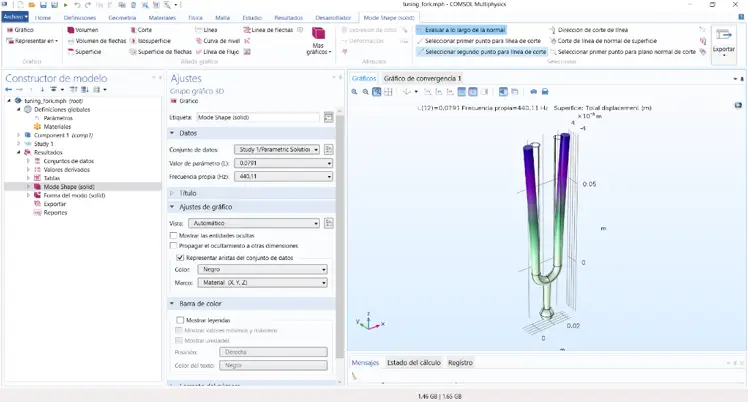COMSOL Modeling and Workflow
Basic Course, First term
Taught by Pablo Ferrada, Antonio Atienza Márquez and Alejandro Cifuentes López
In this course we will deal with the working desktop of COMSOL Multiphysics. We will study the basic concepts of the workflow and the different ways of execution. We will also cover workspace customization, creation of definitions, visualization and selection tools.
After taking this, you will know the basic utility and functionality of COMSOL Multiphysics for simulation in Science and Engineering. You will also be able to list, identify and use the basic modeling methods, such as model builder, component node, physics nodes, physics interface selection, model convergence and accuracy analysis, boundary conditions, etc.
Geometry generation, material selection and management and meshing process are necessary and important steps in the multiphysics modeling workflow. In this course we will use and study in depth all the tools available in COMSOL Multiphysics to perform them efficiently.
Finally, once the solutions have been calculated, it is necessary to undertake the final task of analyzing, representing, processing and extracting the required results. We will describe all the functionalities for the visualization and analysis of the results, as well as the management of the datasets. We will show and practice the methods available for the extraction of derived values in tables, the generation of graphical representations, the management of graphical groups, the export of data and images and the generation of reports.
- Modeling desktop
- COMSOL Multiphysics desktop and application library.
- Physical interfaces. Model wizard.
- Icons, toolbars and keyboard shortcuts.
- Basic concepts of modeling
- Generation of a COMSOL Multiphysics model.
- Model builder. Components.
- Physics nodes and boundary conditions.
- Convergence and accuracy.
- Customization of COMSOL Multiphysics desktop
- Customiztion.
- General preferences.
- Physics, Studies and Results advanced options.
- Definitions
- Global and local definitions.
- Operators, functions and constants.
- Predefined and built-in variables.
- Mass properties and template functions.
- Component couplings.
- Coupling operators and coordinate systems.
- Identity and contact pairs. Probes.
- Infinite elements and absorbing layers.
- Visualization and selection
- Tools for visualizing and controlling models.
- Geometric entities and named selections.
- User-defined views.
- Generation of the geometry
- Primitives and geometrical operations.
- Solid and boundary modeling.
- Geometries in 1D, 2D y 3D.
- Exploration tools of geometrical properties.
- External CAD data and parts library.
- Materials
- Material databases.
- Material generation.
- Definition of properties.
- Material functions.
- Meshing and meshing techniques
- Mesh tools.
- Mesh operations.
- Moving mesh.
- Mathematical interfaces for controlling mesh deformation.
- Analysis of results
- Visualisation and analysis of results.
- Datasets.
- Extraction of derived values.
- Graphical representations.
- Graphic groups.
- Reports and export of data and images.
Image created using the COMSOL Multiphysics® software and courtesy of COMSOL.
